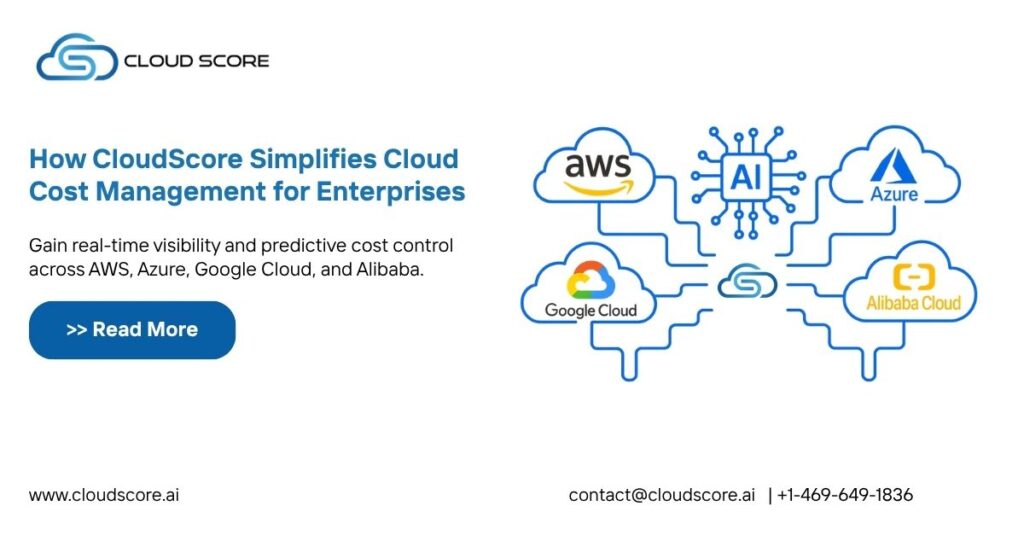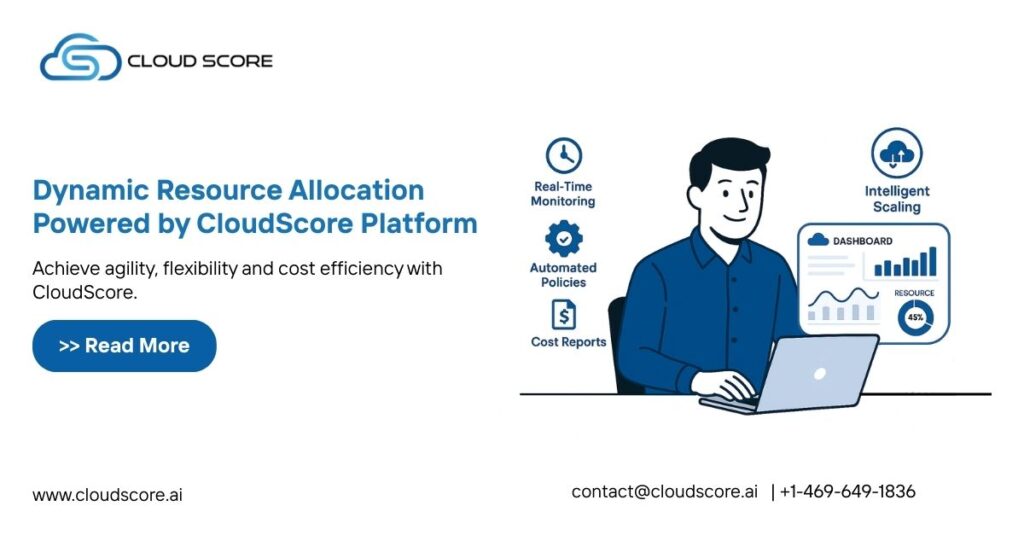How CloudScore Simplifies Cloud Cost Management for Enterprises
The Complexity of Cloud Cost Management As enterprises scale their cloud infrastructure, managing costs becomes increasingly challenging. Between multi-cloud deployments, dynamic workloads and fluctuating pricing models, cloud cost management is no longer a simple accounting task – it’s a strategic imperative. Many organizations struggle with overspending, inefficient resource utilization and delayed insights, making it difficult to optimize cloud spend while maintaining performance. Enter CloudScore an AI-powered FinOps platform that transforms cloud cost management from a reactive, manual process into an autonomous, intelligent operation. 1. The Pain Points of Traditional Cloud Cost Management Traditional approaches to cloud cost management often fall short because they are: Reactive: Alerts and reports often come after overspending occurs. Manual: Teams spend hours analyzing spreadsheets and dashboards. Fragmented: Multi-cloud environments require multiple tools and integrations. Error-Prone: Human oversight leads to misallocation and waste. These limitations make it difficult for enterprises to achieve real-time cost visibility, governance, and optimization. 2. CloudScore: Simplifying Cloud Cost Management CloudScore streamlines cloud cost management with intelligent automation and predictive insights, helping enterprises: Gain real-time visibility across AWS, Azure, GCP and hybrid environments Detect anomalies proactively before they impact budgets Optimize cloud usage autonomously with AI-driven recommendations Forecast future costs with predictive analytics based on actual consumption trends Unlike traditional tools, CloudScore doesn’t just report problems it solves them in real time. 3. Key Benefits for Enterprises Enterprises adopting CloudScore experience tangible business benefits: Up to 30% reduction in cloud waste through proactive optimization Improved forecasting accuracy for better budget planning Faster decision-making with AI-driven insights Cross-team collaboration via unified dashboards and intelligent reporting Continuous compliance with automated governance enforcement CloudScore not only reduces costs but also frees your FinOps team to focus on strategic initiatives rather than repetitive tasks. 4. CloudScore vs Traditional FinOps Tools Feature Traditional Tools CloudScore Real-Time Visibility Limited, delayed Continuous, AI-driven Optimization Actions Manual Autonomous and predictive Multi-Cloud Support Partial Full support across AWS, Azure, GCP, hybrid Forecasting Historical trends only Predictive, scenario-based Governance Rule-based, manual Intelligent, automated CloudScore bridges the gap between visibility and action, giving enterprises full control over cloud spend. 5. Why CloudScore is the Future of Enterprise FinOps With modern enterprises adopting multi-cloud strategies, complexity is inevitable. CloudScore simplifies this complexity by: Automating cost optimization across all cloud environments Providing actionable insights for proactive decisions Predicting spend trends to avoid surprises Aligning cloud costs with business objectives In short, CloudScore transforms cloud cost management from a reactive task into a strategic advantage. Make Cloud Cost Management Effortless CloudScore empowers enterprises to simplify, automate, and optimize cloud costs with confidence. By combining AI-driven insights, autonomous actions, and predictive analytics, it ensures cloud spending aligns with business goals giving enterprises control, efficiency, and scalability. Stop struggling with complex dashboards and delayed reports. CloudScore makes cloud cost management seamless, intelligent, and proactive. Unlock the power of autonomous cloud cost management – schedule your CloudScore demo today and start optimizing smarter, faster, and stress-free. Request a Demo | Start Your Free Trial | Contact Our Experts See more Blogs: Automated FinOps Platform | Multi-Cloud Spend | Cost Efficiency | Cloud Security | Dynamic Optimization | Seasonality Insights | Cloud Governance | Sustainability Reporting | Cloud Infrastructure | Predictive Analytics | Integrating FinOps | Forecasting | Automated Cost Management | Cloud Cost Optimization


